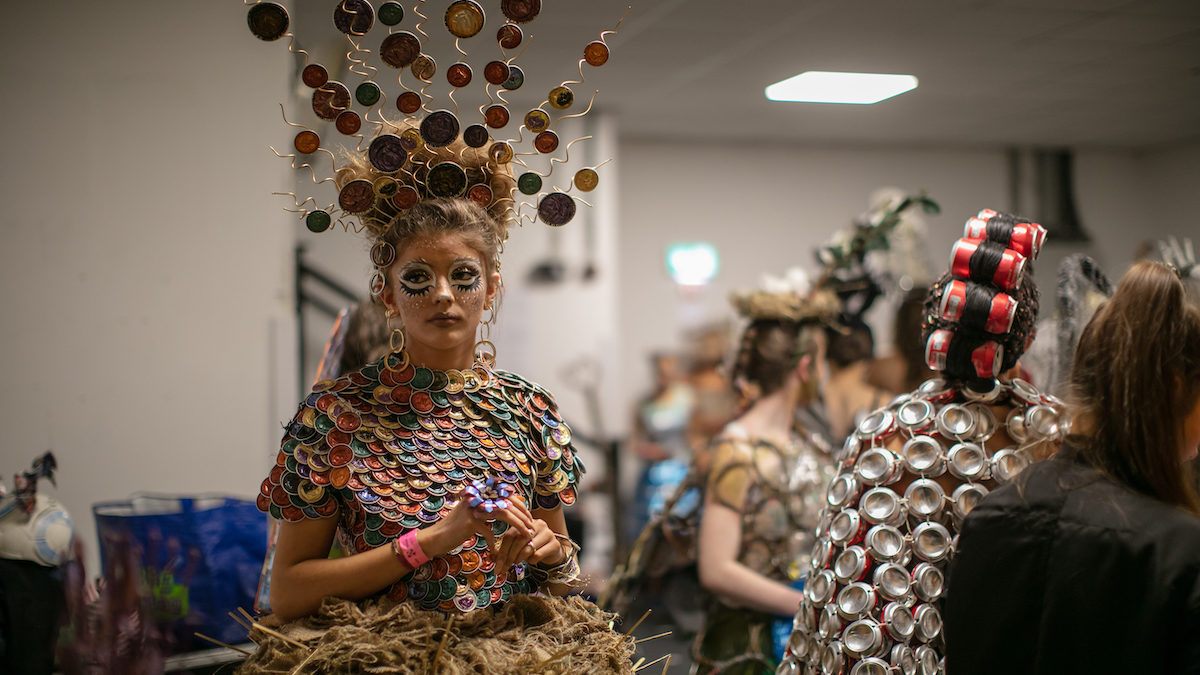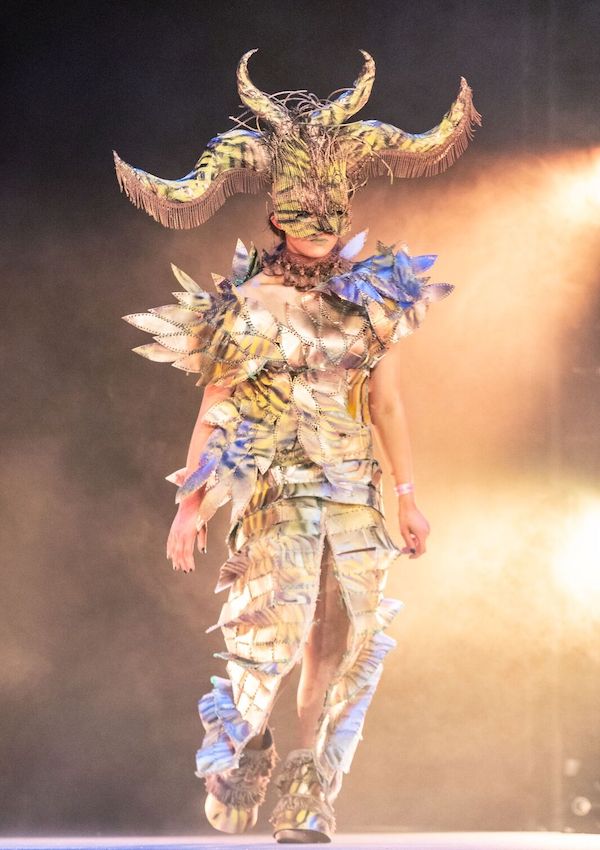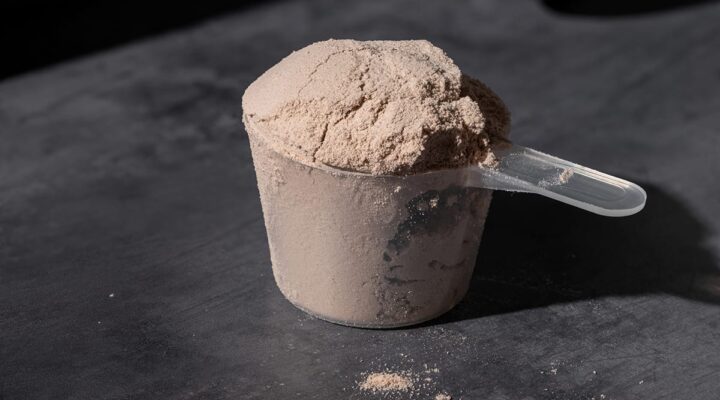Junk Kouture: The Schoolchildren Leading Fashion Into a Sustainable Future

Youth culture has always been a driver for change, especially when it comes to the world of fashion. But over the last decade a key divide has arisen, threatening to over-ride the other and become the guiding determiner of the industry’s future, and perhaps, that of the planet we live on.
Over on one side is the seemingly unstoppable rise of fast-paced, mass-manufactured clothing, all made by severely underpaid garment workers using environmentally unfriendly poly blends. It can be bought cheaply at the click of a button, and thrown away when used without thought, ready for a new outfit to be shipped in and snapped for the ‘gram.
On the other though is a growing eco-conscious community led by secondhand clothing apps like Depop and fashion school students that are pushing sustainable design to tell an ever-evolving, increasingly fascinating story. Take super-young fashion darlings like Harris Reed, whose entire SS22 collection was made from donated Oxfam clothes, and French haute couture wonderkid, Charles de Vilmorin. “Fashion needs to think more about eco-friendly practices, the impact of climate change and less about making money,” de Vilmorin told Vogue.
This is where Junk Kouture comes in. Founded in 2010, Junk Kouture is a year-round competition for those in second-level education that challenges its participants to design, create and model wearable haute couture styled from waste products.
In Ireland, where the competition started, Junk Kouture has become an everyday part of school life, akin to The Duke of Edinburgh’s Award in the UK or the Scripps National Spelling Bee in the US. Over half of the secondary schools in Ireland take part, the finals of which are televised by the national broadcaster, RTE, and held at the 13,000 capacity 3Arena in Dublin (apart from the last pandemic year of course).

In sum, it’s a big deal for Irish school kids and their teachers. The hope is with the UK launch last month, and the opening up of the competition to participants and city finals around the world — London, New York, Paris, Milan, Abu Dhabi — it’ll also become a big deal for students globally (the 10-year goal is to impact the lives of one billion young people by 2032).
Katie Brill, VP of global communications at Junk Kouture, took part in the competition in 2012 as a 15 year old. “I wasn’t really sporty in school, but was very sciencey and very creative. I was doing chemistry, biology, and art. When I came across Junk Kouture, I thought, ‘wow, this is a platform for me.’ It was massively empowering.
“I made my design out of orange peel skin, and worked on a dehydration process to dry out these oranges to create a leather-like fabric to be able to sew together. That’s now been incorporated into the fashion industry all these years later, with these big brands making designs out of pineapple skin, mushrooms, oranges. It was kind of cross-departmental work. Initially, Junk Kouture seemed to be just for the art department, but now we find you have woodwork, you’ve engineering, you have science, all coming together to find more sustainable and innovative textiles for the fashion industry.”

Asked to recall other innovative designs that have stuck in her memory through the years Brill mentions 2019 contestant Michelle Corcoran who at 16 years old designed a monochrome full-length dress made using bicycle tyres and tubing from a local repair shop. Corcoran has since gone on to gain a scholarship to study Fashion Design at Griffith College Dublin. There’s also Orla O’Hagan, a 2013 contestant whose piece was made from transparent plastic art folders and discarded chains, who went on to intern with shoe designer Sophia Webster and now runs her own sustainable accessories brand.
Looking through past designs in the Junk Kouture archive myself, a 2019 design from 17 year old Clodagh Caffey catches the eye. Featuring an ornate mask complete with tasseled tusks, the shimmery, armour-like pant suit below looks like a cross between The Lion King and Ziggy Stardust. Unbelievably, the whole thing is made out of milk cartons collected from friends and family, each leaf hand cut, spray painted and sewn onto the dress individually.
To help the current crop of students push innovation in their designs Junk Kouture enlists a range of industry insiders as mentors including the designer Rhys Ellis, whose collection made entirely from discarded coffee capsules showed at London Fashion Week. “We want to create these circular engineers,” says Brill, “and to have these young kids know that not all waste has to be discarded.”
- Cow-Ma-Flage by Clodagh Caffey
- Attire by Michelle Corcoran
A former judge, Ellis also creates masterclass videos to show the students manipulation techniques with waste materials, one of many similar videos in Junk Kouture’s educational resource hub. Having spoken to a number of sustainable fashion designers down the years, a regular theme comes to play; the need to embed sustainable design in the next generation of designers.
As these Gen-Z designers come through, to become creative directors at fashion houses, or lead their own fashion brands, the idea is that sustainability should no longer be a decision born out of trend or consumer demands — although we, the general public, also need to be pushing the agenda if we’re going to achieve real change. Instead, sustainable, ethical, responsible design should feel as natural as cutting and sewing, ingrained in every thought process across the design of a garment.
If Junk Kouture can take their template then, and emulate its success in Ireland across the world, it could have a big say in how all of the above is achieved. The aim now will be to make a return to live events for next year’s contest and start to work with schools across the UK to embed the competition in the education system as it has been in Ireland.
Will this be how the war against fast fashion is won then? Well, it’s up to the kids to decide now.
To start your Junk Kouture journey or find out more information, please visit Junk Kouture’s website at https://junkkouture.com/




















